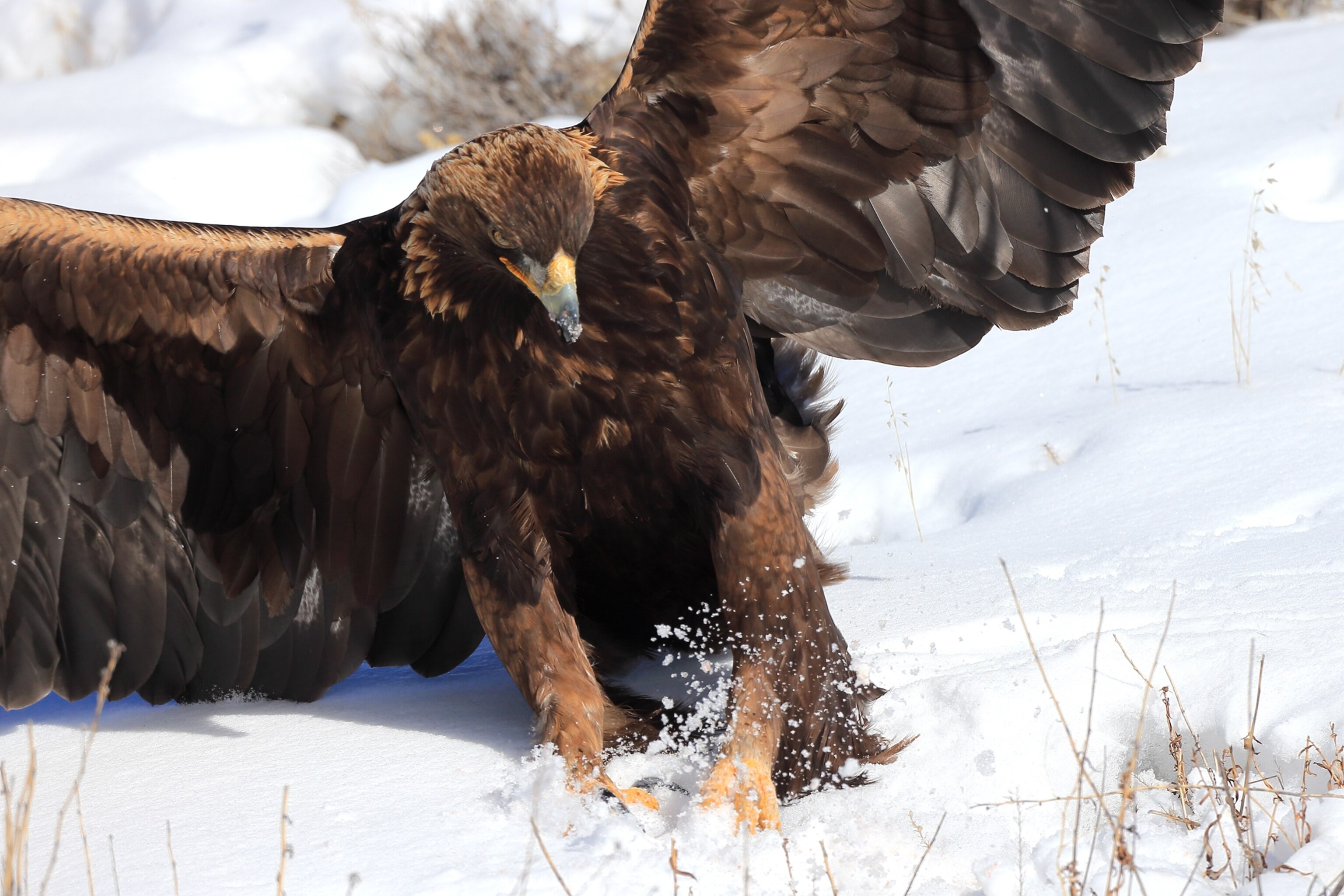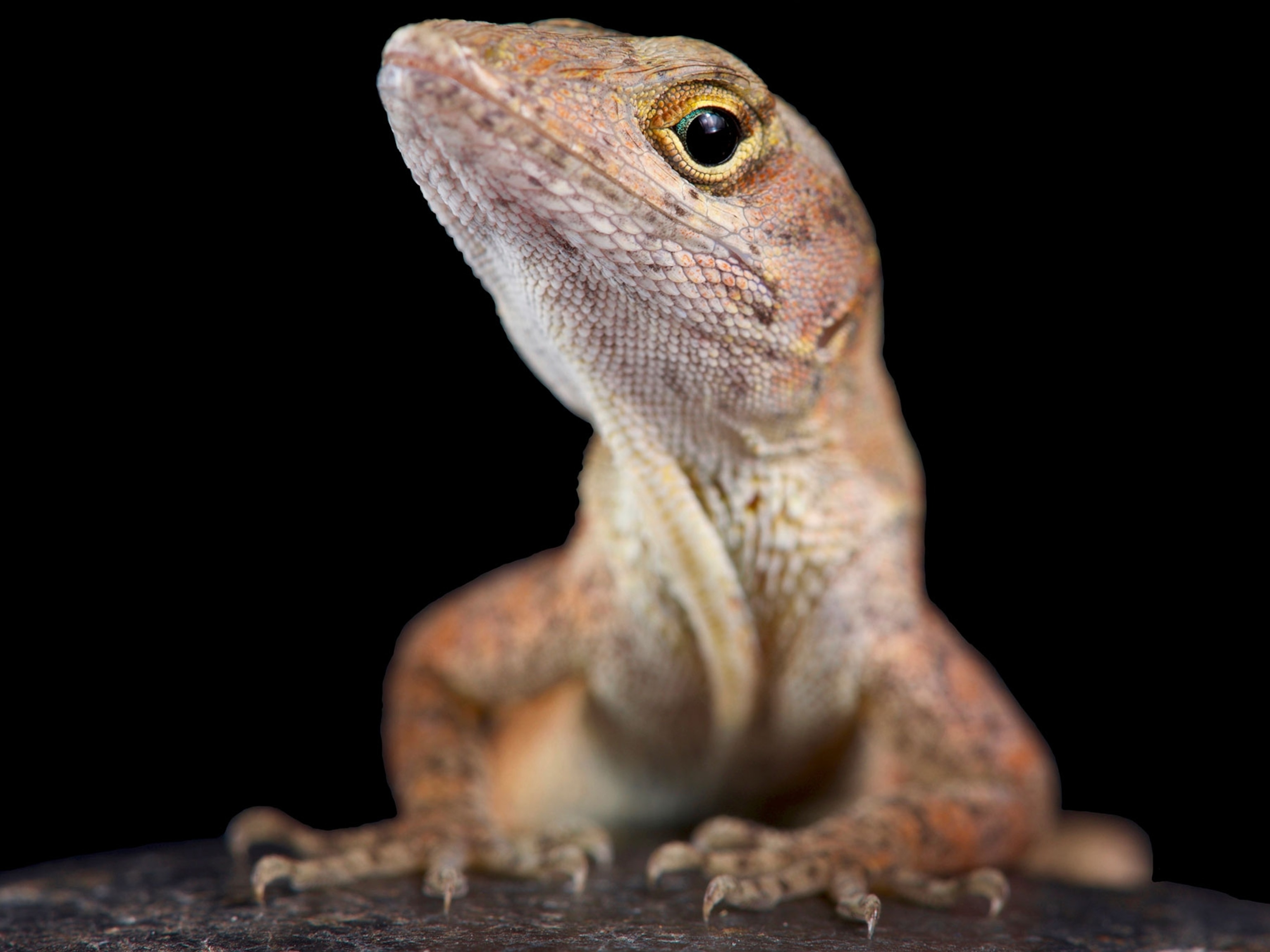
Most U.S. eagles suffer from lead poisoning, study suggests
The majority of adult bald and golden eagles carry high levels of lead, which derives from hunters’ ammunition, a large study found.
Most bald and golden eagles in the United States have been repeatedly exposed to lead throughout their lives, new research shows. The primary source of exposure is ammunition—as eagles scavenge on the carcasses of animals shot by hunters, they can ingest lead fragments from rifle rounds and shotgun pellets.
In the study, published February 17 in the journal Science, researchers examined lead levels in 1,210 eagles across 38 states—the biggest effort of its kind to date in North America. They found that more than half of the adult birds had bone lead concentrations above 10 parts per million, which pathologists define as chronic lead poisoning.
This level of lead poisoning is slowing the population growth rate of both species, says study co-author Vincent Slabe, a wildlife biologist at Conservation Science Global, a research organization based in Bozeman, Montana. Since both species are of conservation concern, anything that might suppress their numbers is therefore highly relevant, he says.
(Meet 115, the Newest Element on the Periodic Table)
While acute poisoning can kill eagles in horrific fashion—for example causing them to become immobile and slowly starve to death—chronic exposure can also have other less visible effects, such as impairing movements and flight, reducing sperm quality, making it impossible to swallow and digest food, and lowering immunity.
The data were relatively consistent across species and regions, though some measures of lead exposure were slightly higher in the Central Flyway of the United States.
“Nearly every single eagle we tested had some lead exposure over the course of its life,” says co-author Todd Katzner, a wildlife biologist with the U.S. Geological Survey based in Boise, Idaho.
When hunters shoot creatures such as deer with lead shotgun pellets or rifle rounds, ammunition fragments can spread throughout the animal. After a kill, hunters often first gut the animal, leaving its innards on the landscape, which may be tainted by splintered bits of lead ammo. Sometimes animals that get shot escape and die later. Either way, eagles can be exposed when scavenging on tainted gut piles or carcasses.
Conservationists have long called for incentives or laws to get hunters to switch to steel or copper ammunition, which costs the same as a high-quality lead shot.
“It is really frustrating that lead poisoning in birds of prey has been well known for more than 50 years, and there have been very limited movements in the regulations adopted in most of the countries” to reduce use of lead ammunition, says Rafael Mateo Soria, a researcher with Spain’s Institute for Game and Wildlife Research, who wasn’t involved in the paper. In Eurasia, golden eagles, white-tailed sea eagles, and other large raptors are similarly widely poisoned by lead from ammunition.

No safe exposure
In the study, the scientists collected samples from living and dead eagles. In the former, researchers measured levels of lead in the blood of birds they captured, or in the course of receiving veterinary care unrelated to the study, while they tested the dead animals’ bones, livers, and feathers.
Bones store lead, a heavy metal that can replace calcium and be released back into the bloodstream. Analysis of feathers suggests up to one-third of bald and gold eagles—which can live up to 20 years in the wild—had suffered recent acute lead poisoning.
Of 620 live birds, 28 percent of bald eagles and nine percent of golden eagles had blood lead concentrations indicative of acute poisoning, potentially enough to cause death. But the vast majority of these eagles had blood levels above five micrograms per deciliter, the threshold that the World Health Organization categorizes as a level of concern in people.
Decades of research in humans has shown there is no safe level of lead exposure, says Howard Hu, a physician and epidemiologist at University of Southern California’s Keck School of Medicine who wasn’t involved in the study.
“I would expect eagles to be just as susceptible to lead’s biological effects as human beings,” Hu says.
A better alternative
Researchers have long known that birds of prey, especially scavengers, are particularly vulnerable to lead poisoning from ammunition. It nearly drove California condors to extinction. Lead can also poison birds in other ways. Waterbirds that consume small pebbles to help them digest food can inadvertently consume shotgun pellets or ammunition fragments. (Learn more: Banning lead ammunition could give condors a chance.)
For this reason, since 1991, lead ammunition has been banned for use when hunting waterfowl in the U.S.
Co-author Slabe, who is also a deer hunter, has begun promoting and testing the efficacy of programs to get hunters in the U.S. to voluntarily replace lead ammunition with alternatives such as copper. Most hunters don’t realize lead ammo can end up hurting eagles, he says, and are willing to explore alternatives.
“Previous research has shown they respond very well to the messaging,” Slabe says. “Hunters are the primary solution to this problem.”
A single lead bullet or shotgun shell can contain several grams of lead, more than enough to hypothetically kill many eagles. Though the birds can be successfully treated for lead poisoning, it rarely happens in the wild. (Learn more: This lead-poisoned eagle miraculously recovered. Most aren’t so lucky.)
Future outlook
Research shows that before the industrial era, lead concentrations in the bones of humans and wildlife such as eagles were below 0.1 parts per million, hundreds of times lower than the average concentration found in adult eagles in the Science study.
To better grasp the nationwide implications, the scientists created a population model, which calculated that lead exposure is reducing the bald eagle’s growth rate by 4 percent per year. Even so, the bird’s populations are expanding due to concerted conservation efforts, rising to at least 315,000 in the lower 48 states during the 2019 breeding season, an increase from the 72,000 counted in 2009, according to the U.S. Fish and Wildlife Service.
The situation with golden eagles is more serious; lead is likely reducing their growth by at least one percent annually, says study co-author Brian Millsap, national raptor coordinator with the service.
“Golden eagle populations are stable at best,” he says, “so a one percent reduction in the [growth rate] could mean the difference between continued stable populations or population decline.”








